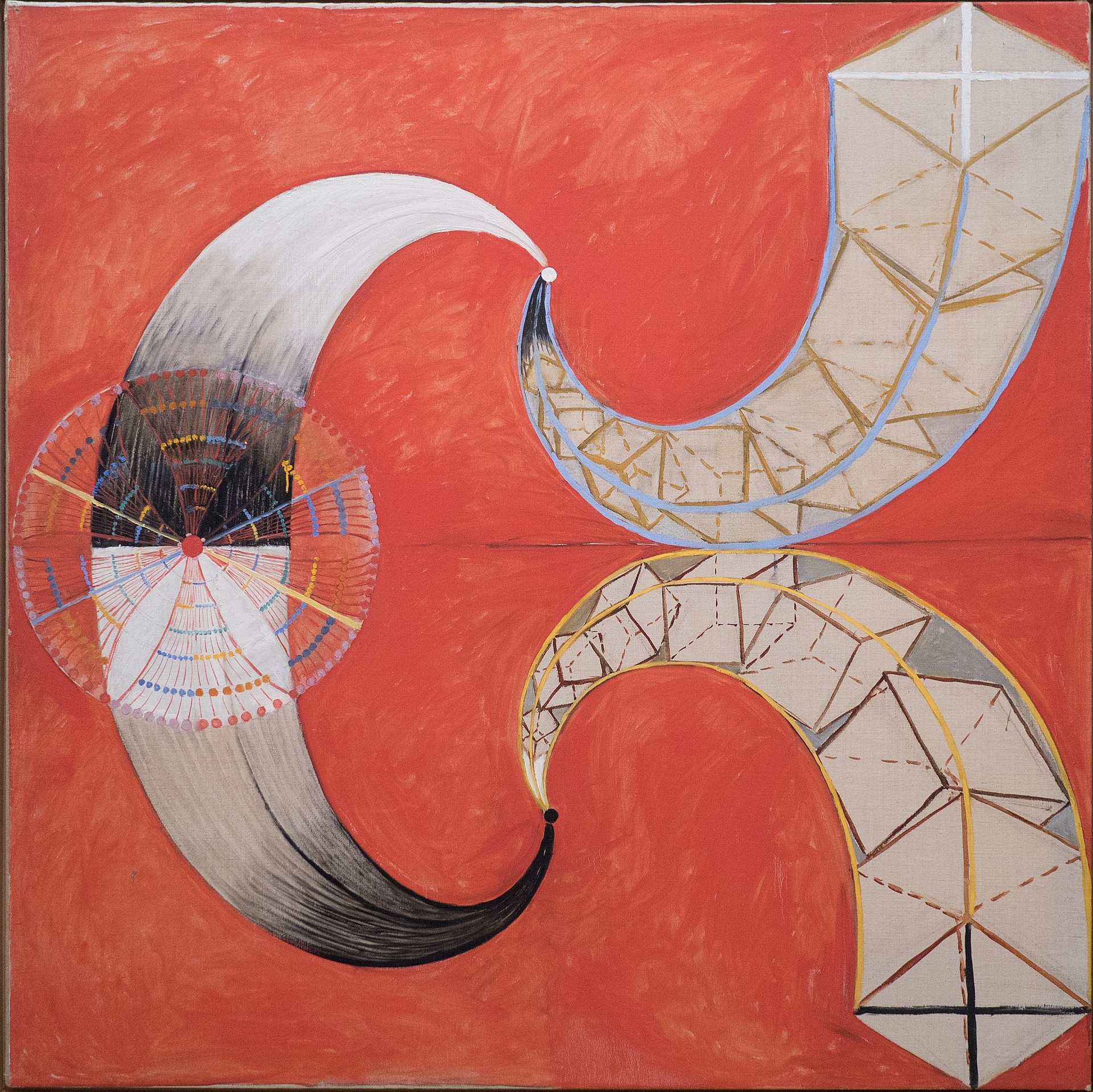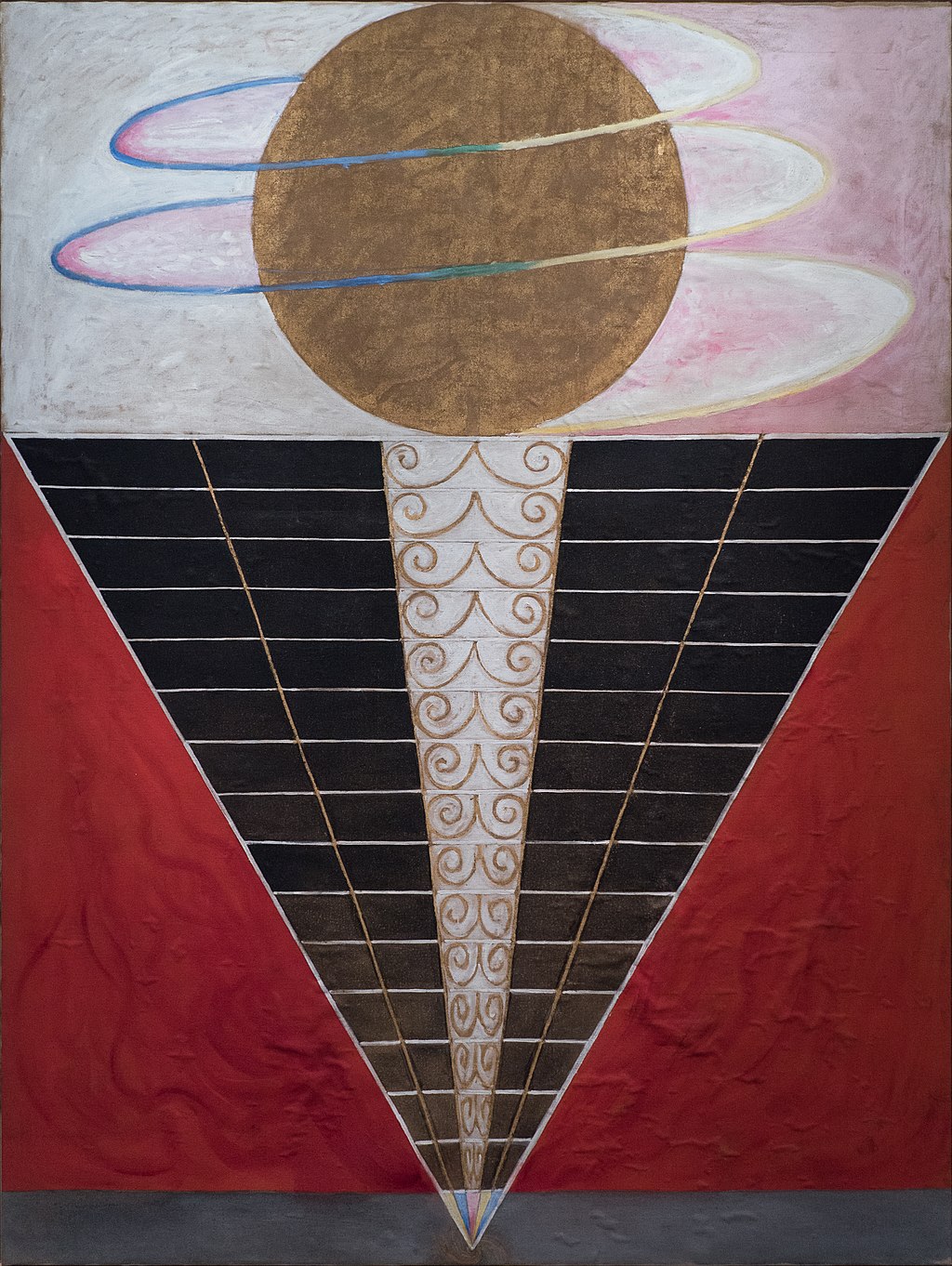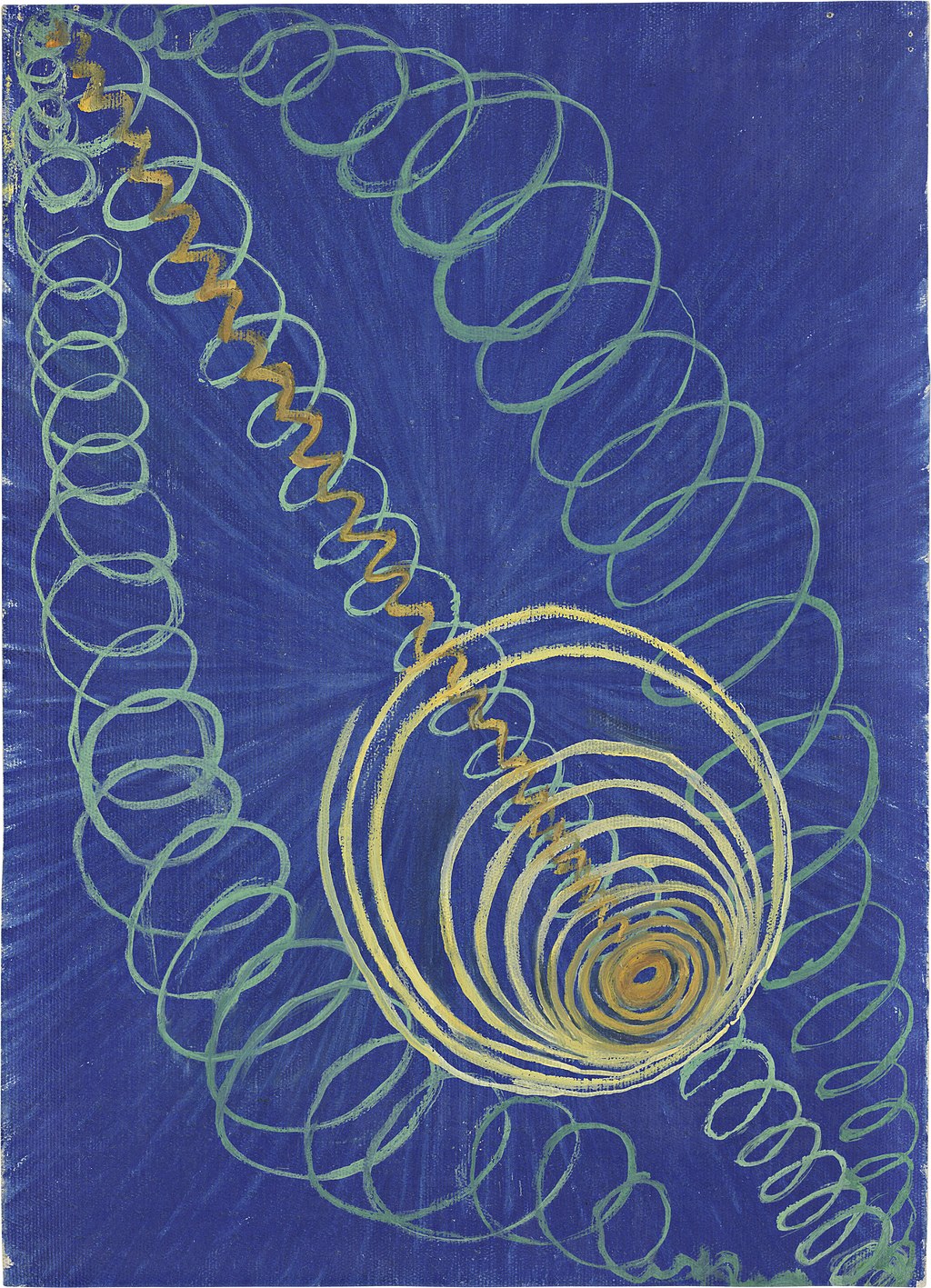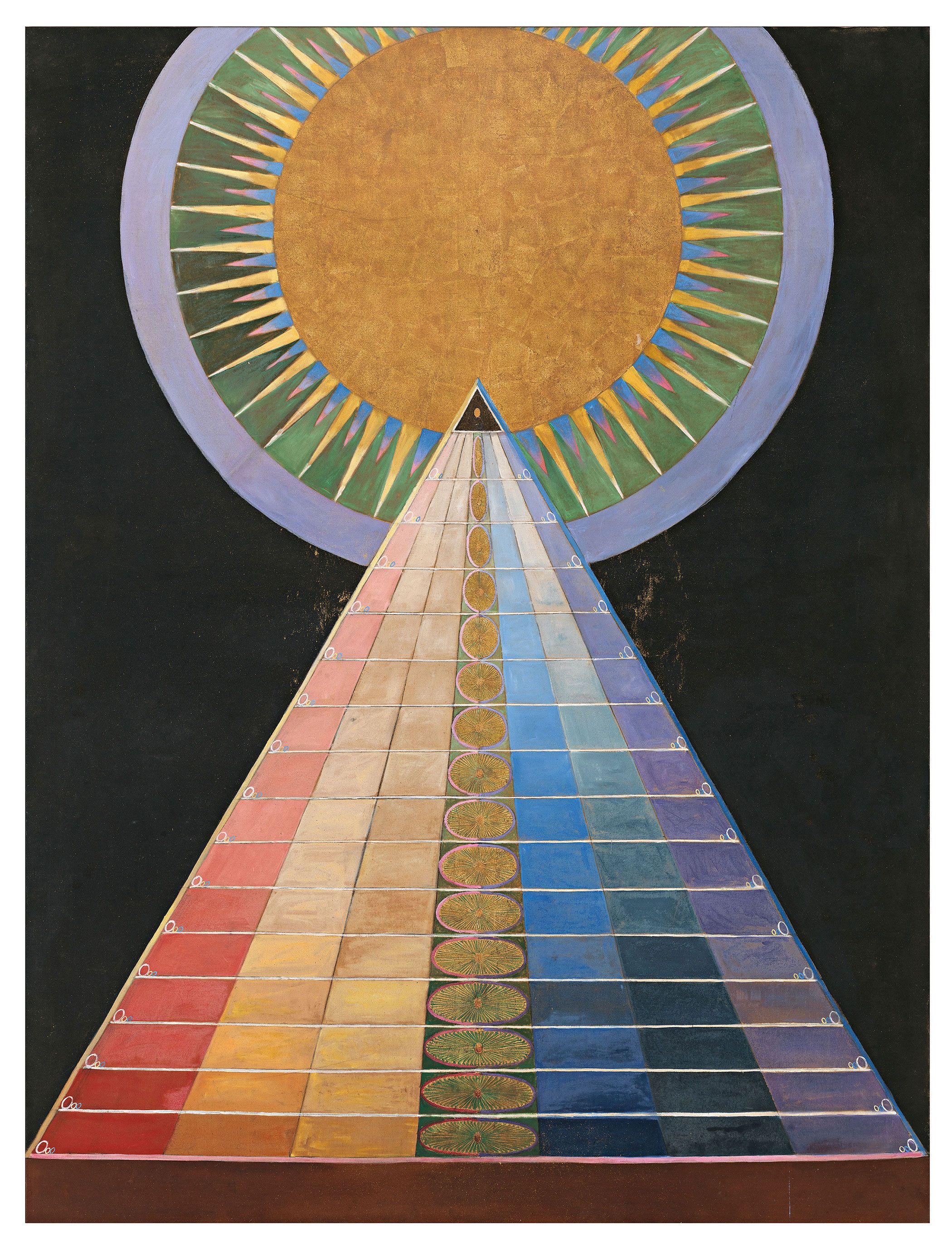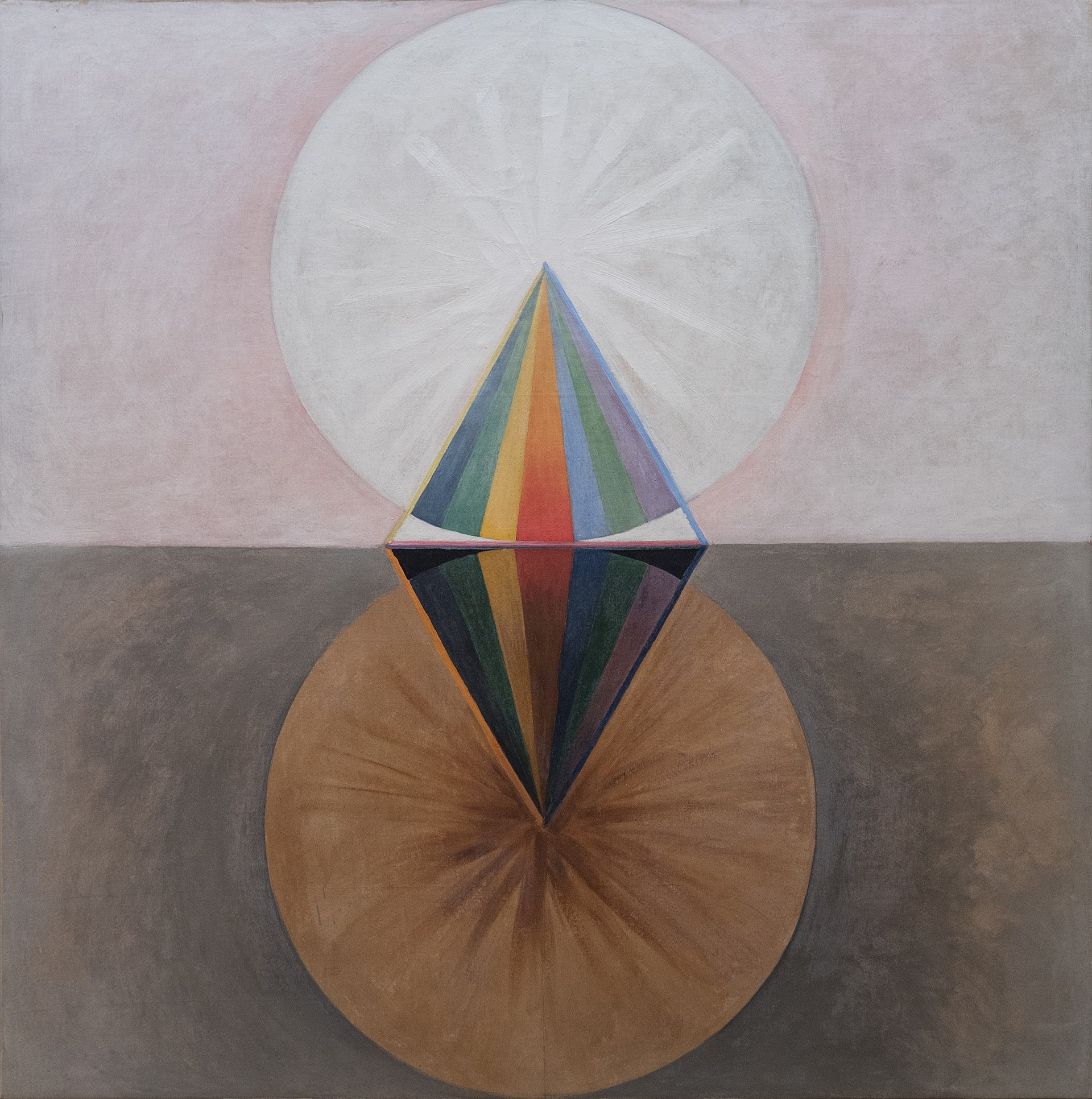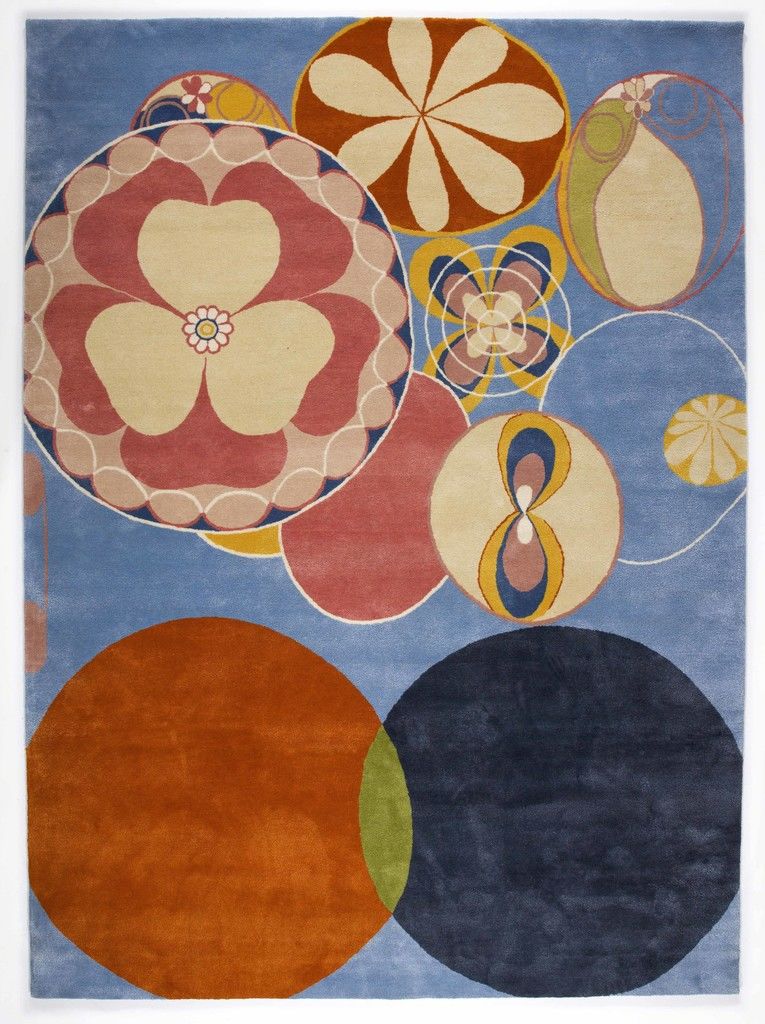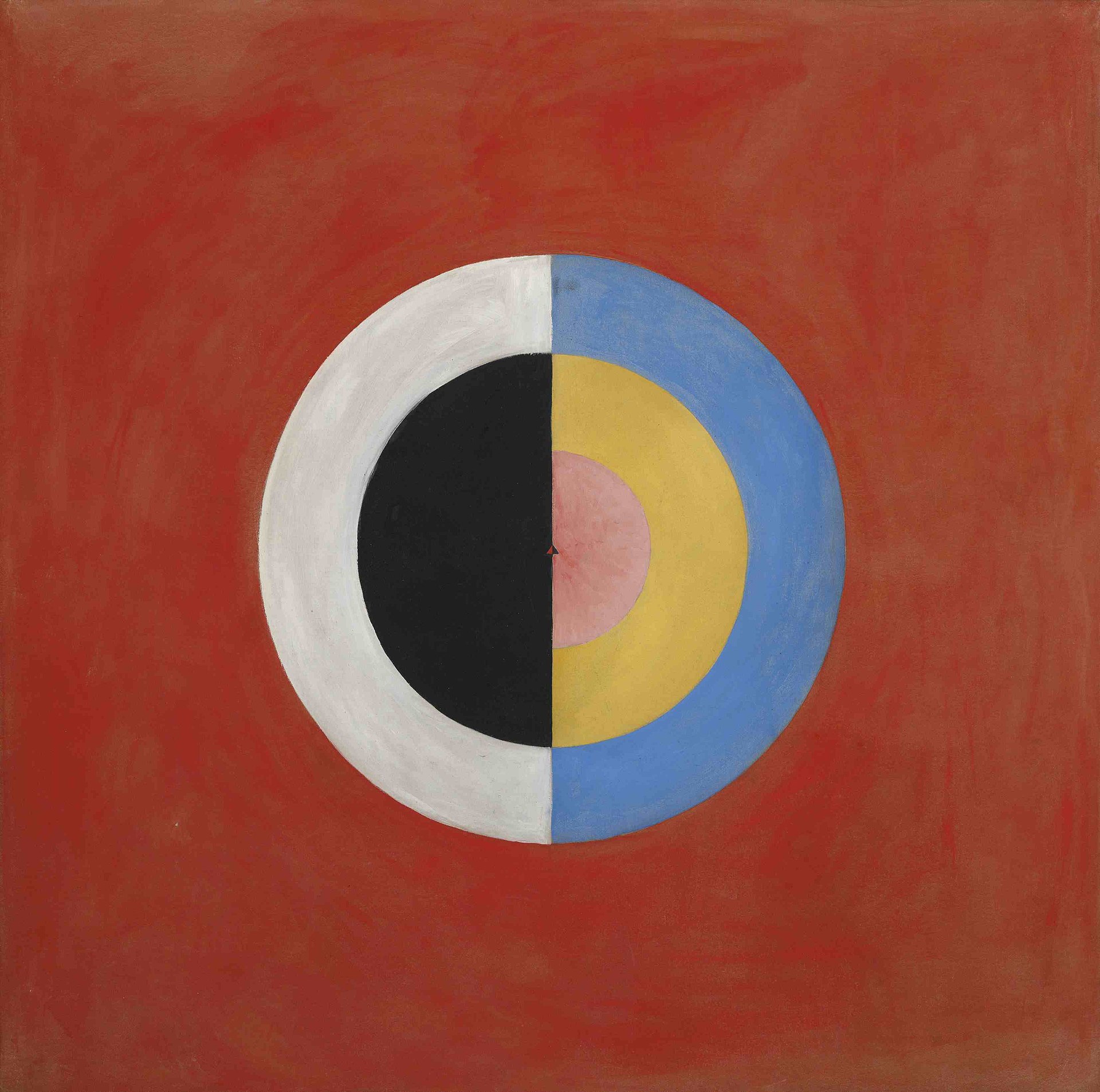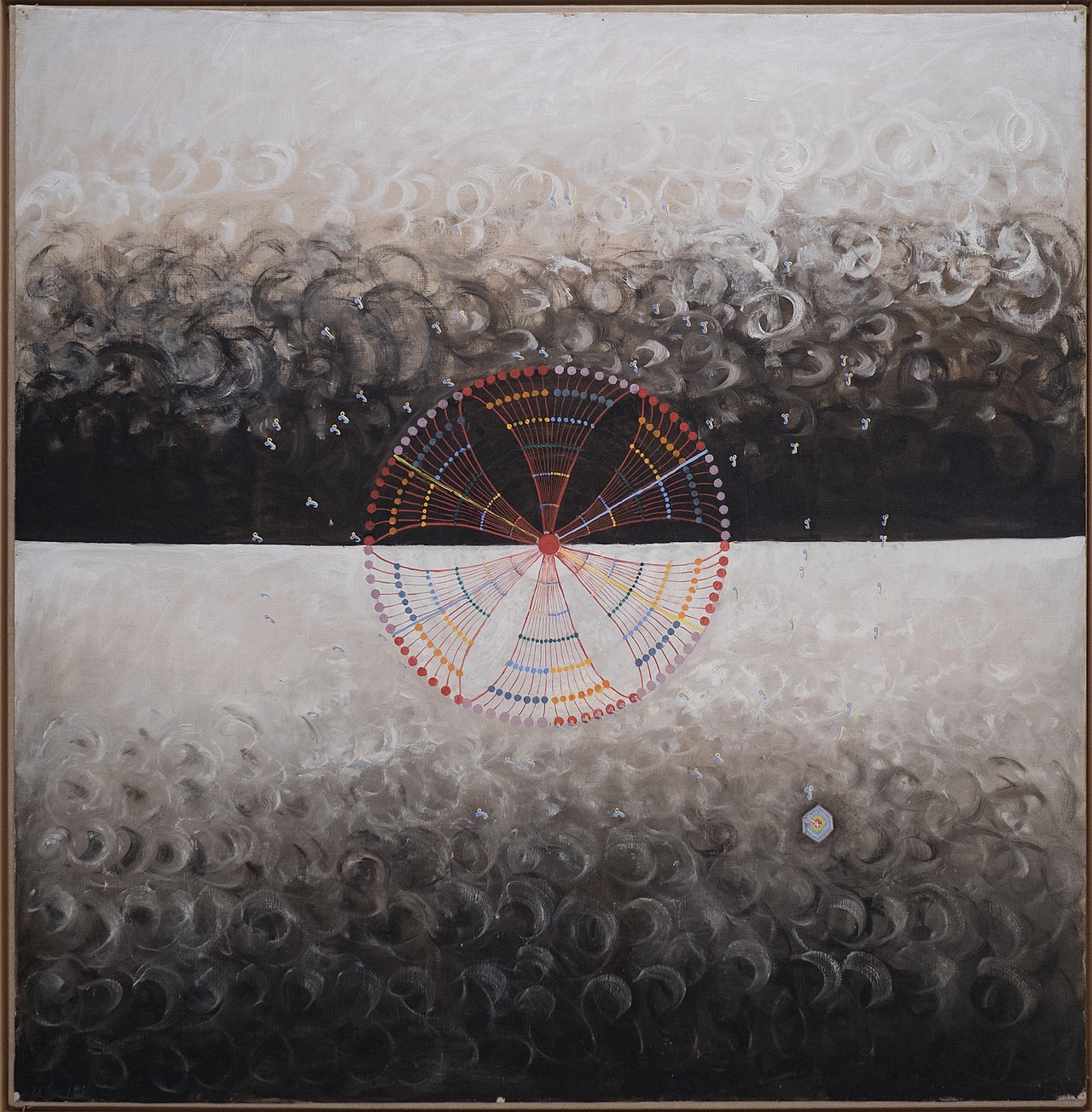LIFE

Hilma af Klint (October 26, 1862 – October 21, 1944) was a Swedish artist and mystic whose paintings were the first Western abstract art known to the current art community. A considerable body of her abstract work predates the first purely abstract compositions by Kandinsky. She belonged to a group called "The Five", a circle of women inspired by Theosophy who shared a belief in the importance of trying to contact the so-called "High Masters"—often by way of séances. Her paintings, which sometimes resemble diagrams, were a visual representation of complex spiritual ideas.
In 1880 her younger sister Hermina died, and it was at this time that the spiritual dimension of her life began to develop. Her interest in abstraction and symbolism came from Hilma af Klint's involvement in spiritism, very much in vogue at the end of the nineteenth and beginning of the twentieth century. Her experiments in spiritual investigation started in 1879. She became interested in the Theosophy of Madame Blavatsky and the philosophy of Christian Rosencreutz. In 1908 she met Rudolf Steiner, the founder of the Anthroposophical Society, who was visiting Stockholm. Steiner introduced her to his own theories regarding the Arts, and would have some influence on her paintings later in life.
Af Klint's work can be understood in the wider context of the Modernist search for new forms in artistic, spiritual, political, and scientific systems at the beginning of the twentieth century. There was a similar interest in spirituality by other artists during this same period, including Wassily Kandinsky, Piet Mondrian, Kasimir Malevitch, and the French Nabis, in which many, like af Klint, were inspired by the Theosophical Movement. However, the artistic transition to abstract art and the nonfigurative painting of Hilma af Klint would occur without any contacts with the contemporary modern movements.

 Through her work with The Five, Hilma af Klint created experimental automatic drawing as early as 1896, leading her toward an inventive geometric visual language capable of conceptualizing invisible forces both of the inner and outer worlds.[citation needed] She explored world religions, atoms, and the plant world and wrote extensively about her discoveries. As she became more familiar with this form of expression, Hilma af Klint was assigned by the High Masters to create the paintings for the "Temple" – however she never understood what this "Temple" referred to.
Through her work with The Five, Hilma af Klint created experimental automatic drawing as early as 1896, leading her toward an inventive geometric visual language capable of conceptualizing invisible forces both of the inner and outer worlds.[citation needed] She explored world religions, atoms, and the plant world and wrote extensively about her discoveries. As she became more familiar with this form of expression, Hilma af Klint was assigned by the High Masters to create the paintings for the "Temple" – however she never understood what this "Temple" referred to.
